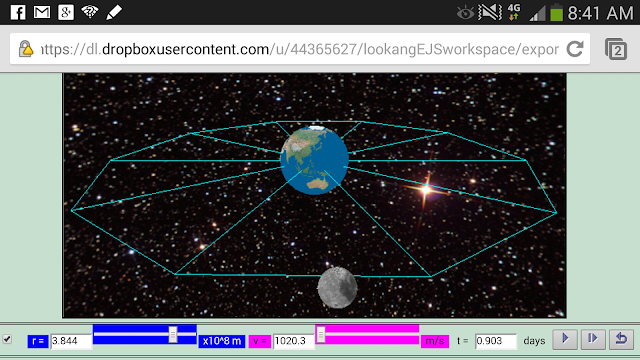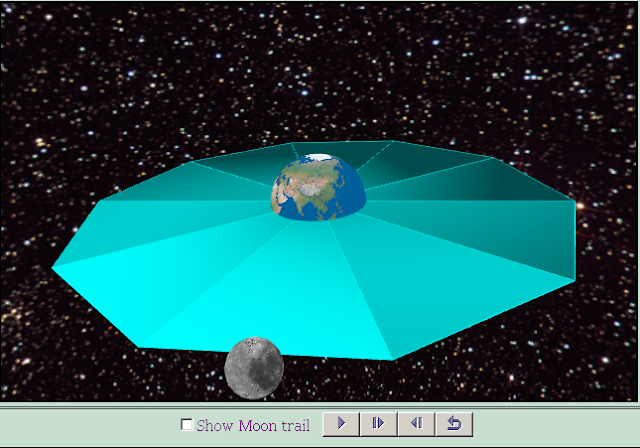EJSS Earth and Moon Model by paco remixed by lookang.
https://dl.dropboxusercontent.com/u/44365627/lookangEJSworkspace/export/ejss_model_EarthAndMoon3Dwee/EarthAndMoon3Dwee_Simulation.html
Description:
The Moon completes its orbit around the Earth in approximately 27.32 days (a sidereal month). In this model, we assume the Moon to orbit about the center of the Earth. By this assumption, the Moon is at a distance of about 385000 km from the center of the Earth, which corresponds to about 60 Earth radii. With a mean orbital velocity of 1.023 km/s,[1] The Moon orbit is modeled to be a perfect circular motion orbit, a close approximation the real Moon's orbit. The model also assume the Moon to move on the Earth's equatorial plane.
The equations of motion are:
The equations of rotation are:
Equations used to calculate physics quantities are:
The model used
so after 360 δt
steps,
To calculate period T,
therefore,
For collision detection, i used
For largely visualization purposes,
for example in the model versus in the world,
where k=0.58x10−4
to achieve comparable period T=27.3
days
and velocity of moon is
changes made:
added realistic numbers in the model
added better graphics from creative commons or public domain
pictures
added plane of Moon's rotational plane
added control and sliders to suit my usual design ideas
Activities:
set the velocity to zero and play the simulation, is it as you
expected it to observe? What is the physics concepts that can be
used to explain this?

